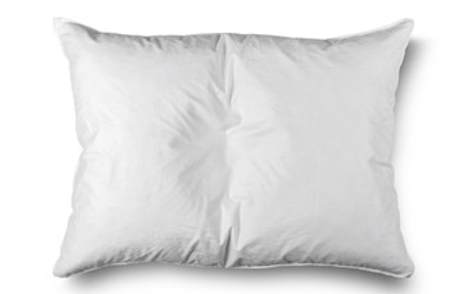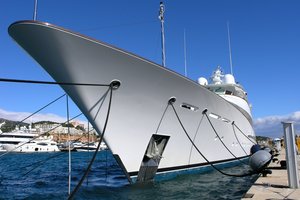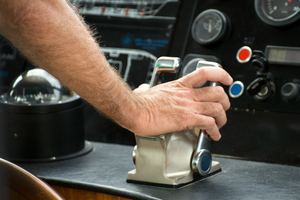There are so many factors involved with setting a secure anchor, from shelter from the forecasted weather to the nature of the seabed, weight-for-weight ratio, and knowing when it's set.
Here we delve into the practice of anchoring, where the unique tranquility of waking up in seclusion, tethered to the seabed, awaits exploration. We break down the essential elements that contribute to the skill of anchoring.
Shelter
When selecting an anchorage, it's important to check both the current weather and the forecast for your intended stay. While local charts may suggest a recommended anchorage based on prevailing winds, keep an eye on any predicted changes in wind direction. Make sure the anchorage still provides shelter if the wind shifts.
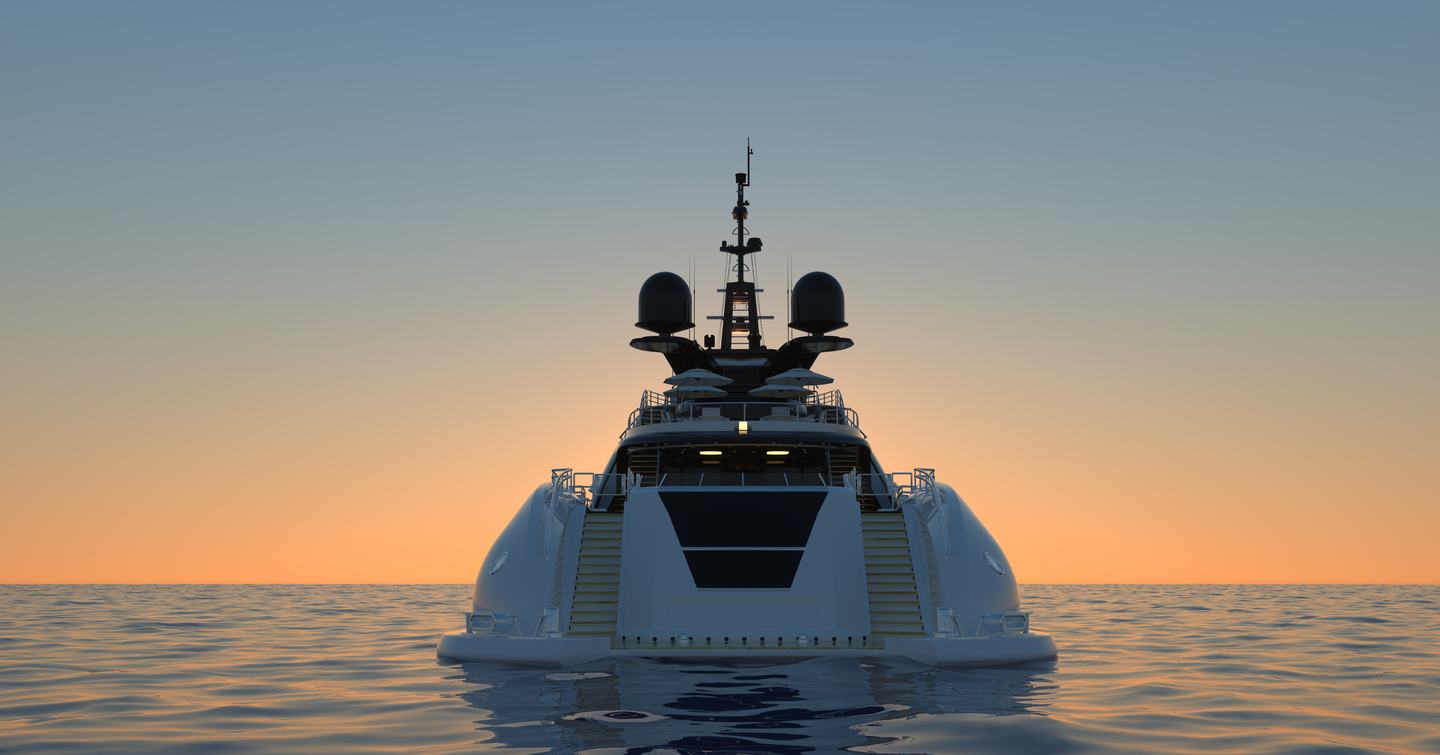
Check the water depth (chart datum) and anticipate tidal changes when anchoring.
Consider the tidal range: if you anchor during high water, ensure there will be sufficient depth when the tide recedes. Conversely, if anchoring during low water, deploy enough chain to secure the yacht when the water depth increases during high tide.
fS M BkSh
On nautical charts, abbreviations are commonly used to describe the nature of the seabed. To find a recommended anchorage, look for the quintessential anchor symbol.
The common ones are
- Mud: M
- Sand: S
- Gravel: G
- Rock: R
- Coral: C
- Shells: Sh
- Clay: Cl
- Seaweed: Wd
- Sand and Rocks: SR
- Rock and Coral: RC
- Mud and Sand: MS
Enhanced details are achieved by incorporating additional indicators, such as f, Bk or s, for example, indicating fine (fS is fine sand), soft, (sM is soft mud), and broken, (BkSh is broken shell).
For a comprehensive list of abbreviations, refer to the Admiralty Guide to Symbols and Abbreviations Chart 5011.
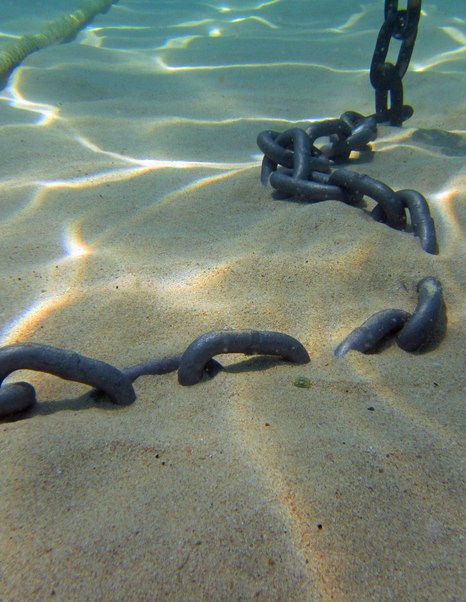
Depth
Chart Datum
Chart datum signifies the lowest predicted astronomical tide representing what is expected to be the water level's absolute minimum. It's the literal reference point on the chart, with the numbers in the blue and white sections indicating the lowest depth of water.
Feet and Meters
When looking at the depths on a chart in feet and inches, align your echo sounder to the same units. Similarly, for charts in the metric system, ensure your echo sounder is set accordingly.
Scope
Scope refers to the recommended length of chain to deploy based on the depth. If using an all-chain anchor setup, lay out four times the depth. For instance, in a depth of five meters, deploy 20 meters of chain. If your anchor line combines chain and warp, extend it to six times the depth.
Weight for Weight
Anchors are designed to efficiently embed themselves and grip the seabed, and are evaluated based on their "holding power," representing their ability to withstand a particular weight. Depending on the anchor type and various factors, they can securely hold a boat up to 200 times its weight.
The recommended anchor weight for a yacht is often suggested to be around:
Metric: 0.453 to 0.680 kilograms of anchor weight per 0.3048 meters of yacht length
Imperial: 1 to 1.5 pounds of anchor weight per foot of yacht length
This serves as a general rule, and factors such as the type of anchor, the yacht's windage (how much it presents to the wind), and the local conditions should also be considered.
For the world's biggest yachts, the anchoring system is complex. For example, for a yacht of 100 meters in length overall (LOA), the anchor size typically ranges between 3,000 to 4,500 kg (6,600 to 9,900 lbs) depending on various factors like the yacht's design, displacement, and the conditions it will face.
The anchor is held in place by the horizontal pull of the anchor chain along the seabed. The weight and design of the anchor, combined with the tension from the chain, work together to embed the anchor into the seabed and resist the forces that could cause the boat to drift."
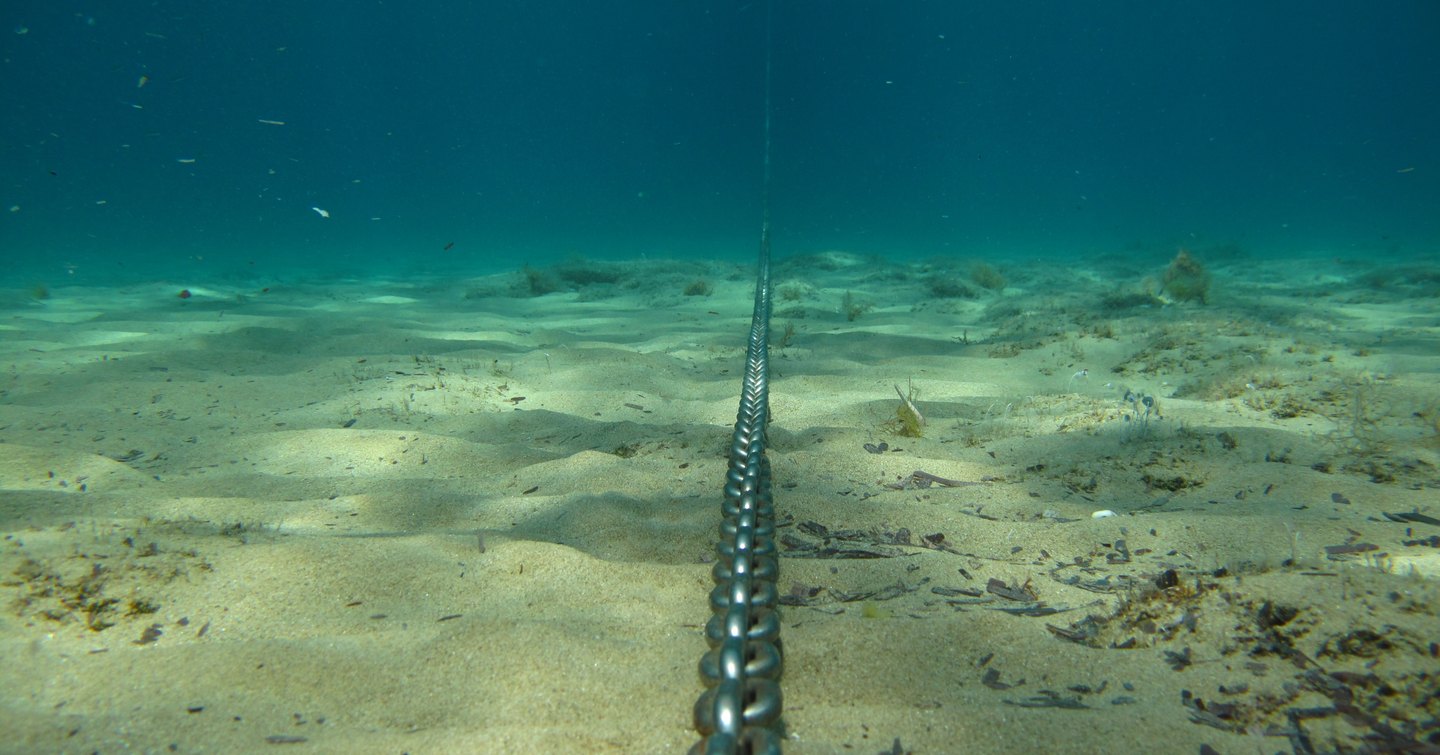
Safety First
When handling the anchor and utilizing the anchor windlass, wearing safety gloves is strongly recommended. The combination of chain, warp, a robust metal anchor, and the machinery of the windlass poses potential risks, and precautionary measures, such as wearing gloves and opting for shoes over a barefoot on-deck approach, add a layer of safety in case of a potential incident.
Having two individuals available for the deployment of the anchor is advisable, if possible.
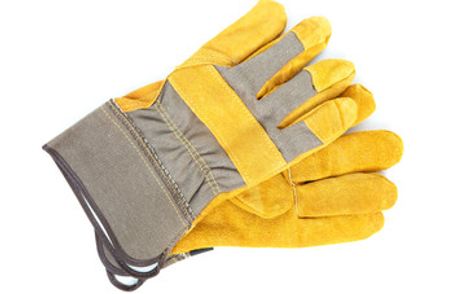

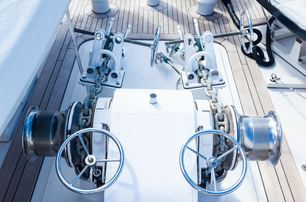
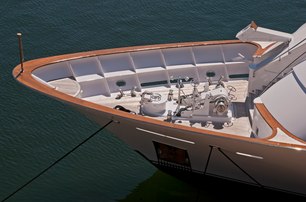
Tripping Line and Buoy
When anchoring on a rocky seabed, a tripping line will help to dislodge the anchor in case it becomes fouled or stuck. Attach a line to the crown of the anchor, lead it to the surface, and secure it to an anchor buoy.
Should the anchor snag on an underwater obstacle, pulling the tripping line can alter the angle of pull, assisting in freeing the anchor from its entanglement.
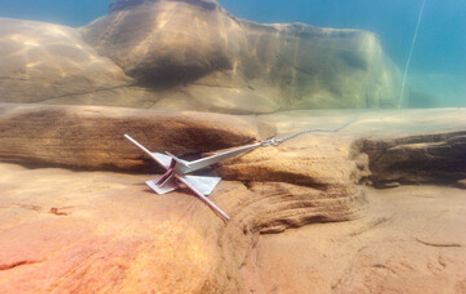
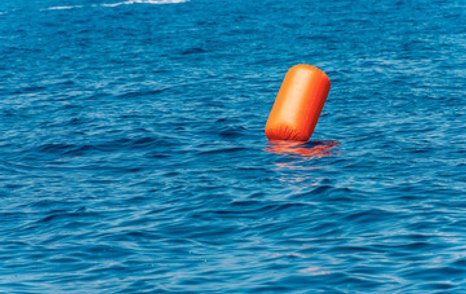
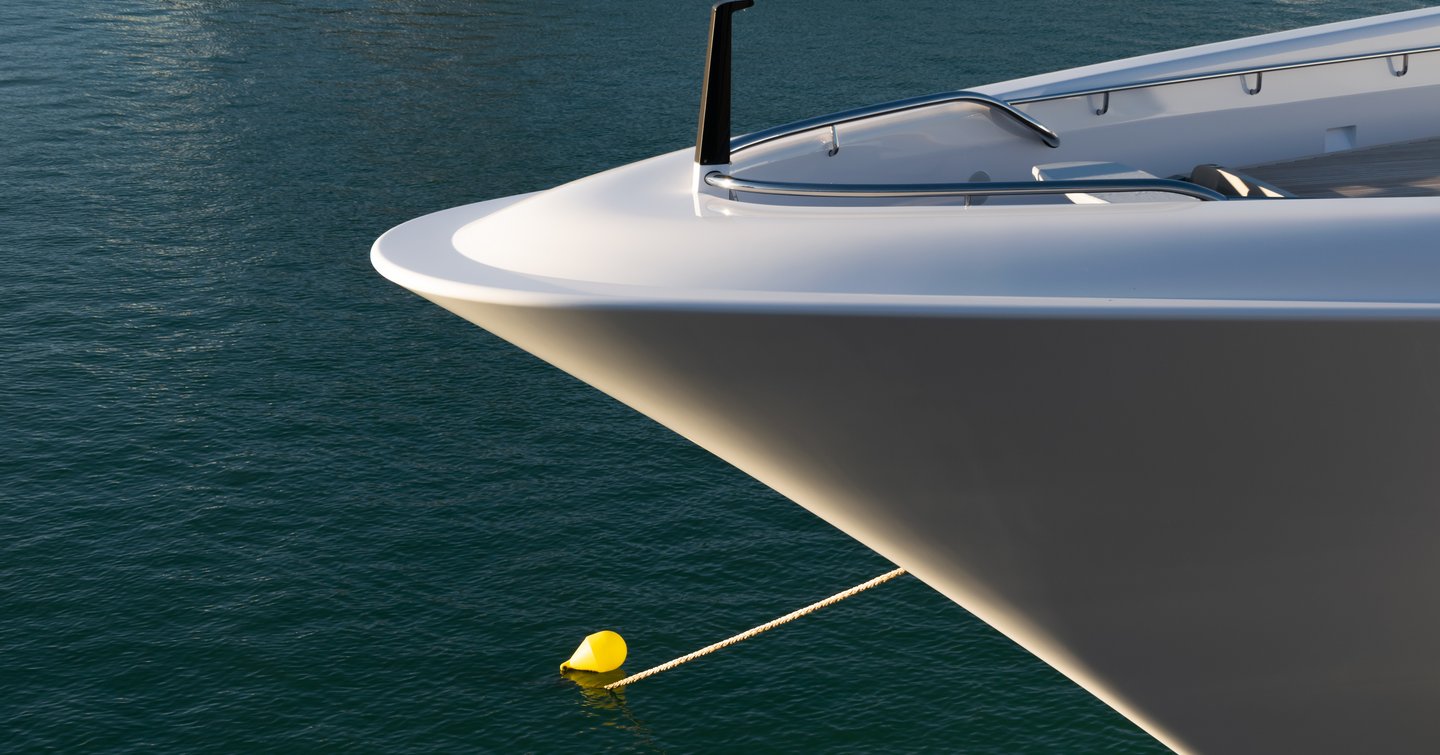
The anchor buoy enhances the visibility of the anchor location, especially in crowded anchorages or areas with poor visibility. Additionally, it serves as an indicator, marking the location of your anchor and advising other vessels to keep clear of the space between the buoy and your bow.
When ready to depart, the buoy provides a clear point to retrieve the anchor, making the process more efficient.
Transit and Swing
When preparing to drop anchor, a thorough assessment of the anchorage's shelter, desired anchoring depth and seabed characteristics will have been concluded. You will have an anchor buoy and tripping line ready to deploy. You, or your crew, are wearing safety gloves and deck shoes. You're all set.
Position the yacht's bow into the wind, slightly forward of the desired settling position. As the command to lower the anchor is given, the windlass will play a role in smooth deployment. Ideally, the anchor chain is marked in meters, allowing the anchor person to gauge when to halt the lowering process. Engage the yacht's engines in astern, letting the vessel drift back slowly, allowing the anchor chain to lay out along the seabed, establishing the necessary horizontal pull to secure the anchor.
Once the yacht settles in the intended position, with the correct amount of chain or a combination of chain and warp deployed, it is time to verify that the anchor has firmly set into the seabed.
Assess the swing of the vessel as the anchor is set; this circular path results from its response to wind, tide, or current. Ensure that the vessel's swing avoids proximity to hazards or other vessels in the anchorage.
When anchoring, setting a transit is a navigational technique that involves identifying two fixed onshore points that align.
Identify two distinct onshore points that are fixed and aligned in a specific way when viewed from the vessel.

Once the anchor is set and the swing is monitored, verify that the onshore points forming the transit remain aligned. This confirms that the vessel is securely anchored and not drifting.
Balls Up
Anchor Down, Ball Up
The International Regulations for Preventing Collisions at Sea (IRPCS) outlines essential guidelines for safe maritime navigation. In accordance with Rule 30, vessels at anchor are required to display a black anchor ball during the day. Typically positioned as high as possible on the bow for optimal visibility, this signals to other vessels that the anchored vessel is stationary and unable to maneuver to avoid collisions.

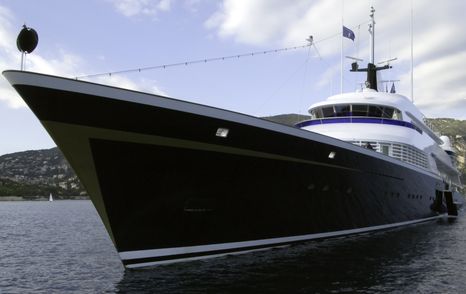

At night, when a black anchor ball will not be visible, Rule 30 stipulates vessels at anchor must exhibit an all-round white light where it can be best seen.
For yachts and vessels exceeding 50 meters in length, two all-round white lights are required — one positioned at the bow and the other at the stern. The light at the bow should be higher than that at the stern.
Lines Ashore
When snugly nestled into an anchorage with a depth that permits reasonable proximity to the shore, it's advisable to secure lines to fixed objects ashore.
This practice helps prevent swinging and further minimizes drift, providing an additional layer of stability and ensuring the vessel remains securely anchored in the desired position.
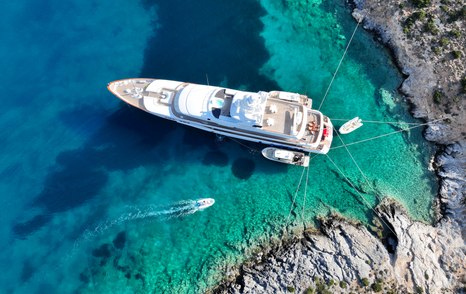
Anchor Watch
An anchor watch is a safety practice used to monitor the position and movement of a vessel while at anchor.
Regarding transits, as mentioned above, there are additional methods for ensuring the vessel's stability and safety:
GPS: Note the vessel's GPS coordinates or bearings to the selected reference point when the anchor is initially set. Many GPS navigation systems offer anchor alarm features. You input the safe radius, and the system alerts you if the vessel moves outside this predefined area.
Radar: Set up the radar to monitor the surroundings. Some radars have features that allow you to define a guard zone, and if any object, including the vessel, moves into or out of this zone, an alarm is triggered.
Watchkeeping: yachts over a certain length adhere to safety guidelines that include maintaining a watch at all times. Crew work in a watch pattern and will visually monitor the yacht on anchor, and refer to the alarms set as mentioned above.
Double Up
Laying two anchors, a technique known as "anchoring with a double anchor," offers several benefits, particularly in challenging conditions. Proper deployment and coordination are essential for effective anchoring. The angle between the two should be around 45 degrees. An angle too large reduces each anchor's holding power.
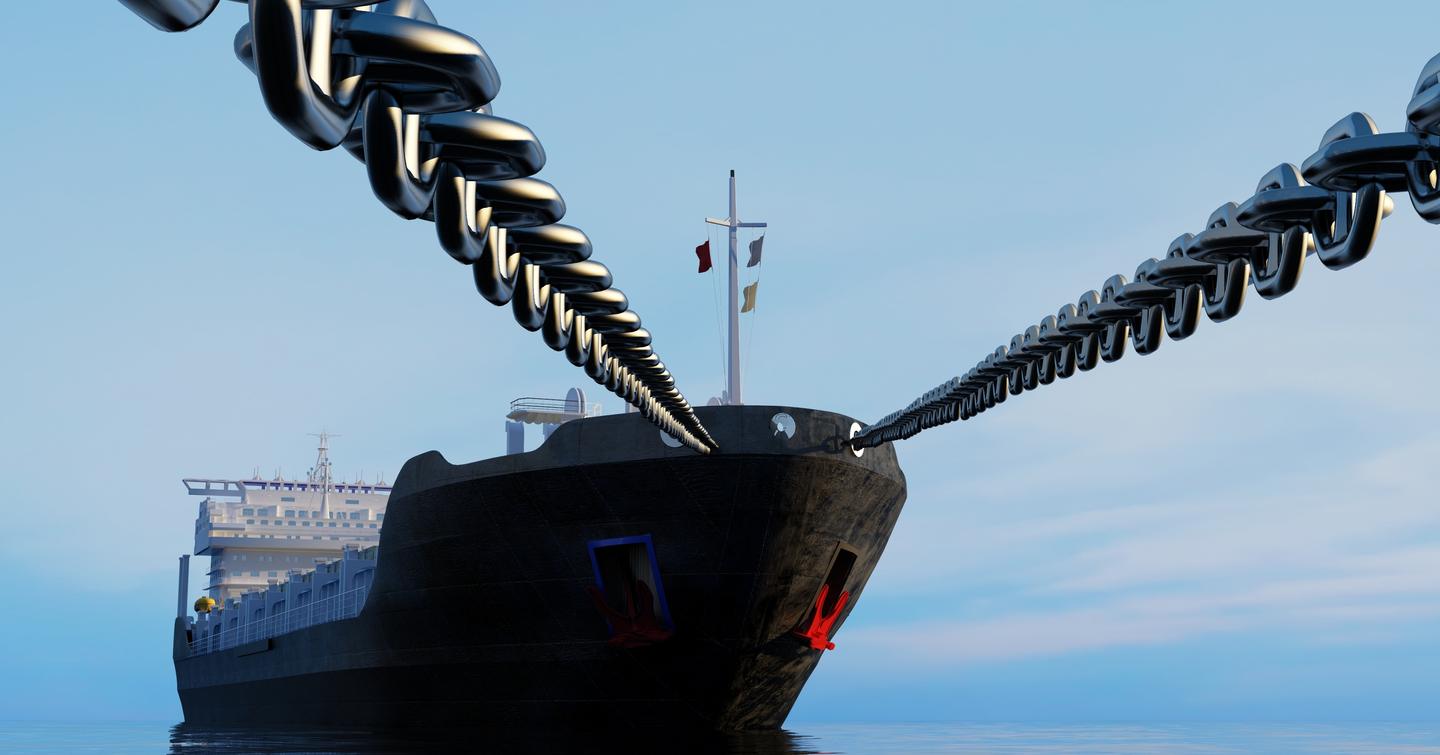
Increased Holding Power:
Using two anchors can significantly enhance holding power, especially in areas with strong currents or unpredictable winds. This reduces the risk of dragging the anchor.
Stability:
Dual anchors provide added stability, minimizing the swinging or yawing of the vessel. This is particularly advantageous in crowded anchorages or tight spaces.
Redundancy:
If one anchor were to fail or dislodge, the second anchor provides a backup, ensuring the boat remains securely anchored.
Peace of Mind:
Having two anchors set can provide boaters with increased confidence and peace of mind, especially in adverse weather conditions.
Compass on Pillow
Here's a handy tip for a worry-free night on the water: Sleep with a compass on your pillow.
When you first anchor, you align the yacht's bow into the wind, completing all necessary checks for that position. However, if the wind shifts during the night, it might be necessary to ensure everything is still secure.
With a compass on your pillow, you can easily monitor any changes without leaving your bed every time you wake up with a slight yacht shift. If you find your feet still pointing north, just adjust your pillow and go back to sleep. But if the compass indicates a 90-degree shift, it's a cue to check things out.
